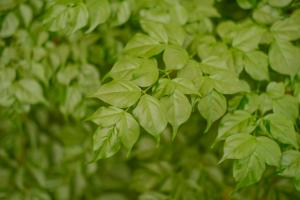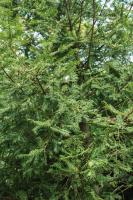Introduction
Agave plant is a succulent belonging to the family Asparagaceae. It is a plant native to the hot and arid regions of Mexico, but it can also be found in southern regions of the United States and some parts of South America. Agave is a versatile plant with a wide range of uses, from the production of alcoholic beverages to the manufacture of textiles and construction materials. In this article, we will explore various aspects of the agave plant and its significance in different fields.
Physical Characteristics of agave plant
Agave plants are characterized by their rosette-shaped leaves, which grow from a central stem. The leaves are thick and fleshy, and they can be green, gray, blue, or variegated in color. The leaves have spiny margins and a sharp end, known as the "agave spike." The plant has a deep and extensive root system, which allows it to survive in harsh environmental conditions. Agave plants can grow up to 10 feet tall, and they have a lifespan ranging from 8 to 25 years, depending on the species.
Uses of Agave Plant
Agave plant is a versatile plant with a wide range of uses. One of the most well-known uses of the agave plant is the production of alcoholic beverages, such as tequila and mezcal. The sap, also known as aguamiel or "honeywater," is extracted from the center of the plant and fermented to produce these beverages. In addition to alcoholic beverages, agave is also used as a sweetener, particularly in the form of agave nectar. Agave nectar is a low glycemic index sweetener that is often used as a substitute for sugar in desserts and beverages.
Apart from its food applications, agave plant is also used in the production of rope, twine, and textiles. The fibers extracted from the leaves of the plant are processed to create a durable and strong material. Agave fibers have been used for centuries by indigenous communities in Mexico for the production of clothing, rugs, and sacks. Recent research has also shown that agave fibers hold promise for the development of sustainable and eco-friendly textiles.
Agave plant is also used as a material for construction. The leaves of the plant, known as pencas, are cut into thin strips and woven together to create roofing materials and fences. The strength and durability of the material make it an ideal choice for building structures in arid regions.
Ecological Significance of Agave Plant
Agave plant plays an important role in the ecological balance of arid and semi-arid regions. It is a source of food and habitat for various animals, including bats, birds, and rodents. The plant's deep root system helps to prevent soil erosion and contributes to water conservation. Agave also has the ability to absorb greenhouse gases, making it an important tool in the fight against climate change.
The plant's role in the agricultural and industrial sectors has led to concerns over its sustainability. Over-harvesting of agave plants for food and industrial purposes has led to a decline in the plant's population. Additionally, the expansion of agave plantations for the production of tequila and other alcoholic beverages has led to deforestation and the destruction of natural habitats. Sustainable farming practices and the promotion of agave as a multi-purpose plant can help to preserve the plant's ecological significance while generating economic benefits for local communities.
Conclusion
Agave plant is a versatile plant with a rich cultural and ecological significance. Its use in the production of alcoholic beverages, textiles, and construction materials has contributed to its economic importance. However, the overexploitation of the plant has led to concerns over its sustainability. By promoting sustainable farming practices and recognizing the plant's multi-purpose potential, we can preserve the ecological balance of arid and semi-arid regions while maintaining the economic benefits of agave cultivation.

 how many times do yo...
how many times do yo... how many planted tre...
how many planted tre... how many pine trees ...
how many pine trees ... how many pecan trees...
how many pecan trees... how many plants comp...
how many plants comp... how many plants can ...
how many plants can ... how many plants and ...
how many plants and ... how many pepper plan...
how many pepper plan...































